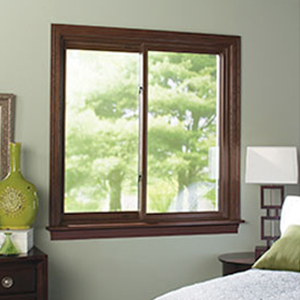Condensation is a sure sign that your windows need to be replaced.
Windows are an important obstacle in between the harsh, variable weather conditions outside as well as our tranquility, constant home temperature levels. Home replacement windows quite often have a fifteen to twenty-year life expectancy, so thankfully we don't need to think of changing them too often. But recognizing when it's time to replace them can be challenging. You might be tempted to try and hold out for another season if you recognize the warning signs. However replacing your home windows now can aid you prolong the life of your entire house and maintain you as well as your family cozy all winter season long. Here are a couple of signs that your home windows are not ready for the rough wintertime this year.
Drafty Home
As home windows age, they start diminishing, breaking, as well as not closing appropriately, allowing air from within your home to drain. As a result of this, your HEATING AND COOLING system battles to keep your residence at a consistent temperature as well as sends your energy expenses increasing. If your home is visibly extra drafty or your electrical costs seem to be going up this fall for no obvious reason, you might intend to have your home windows had a look at.
Tough to Lock
We enjoy having our windows open when the weather is nice, but they shouldn't be open all of the time. During the winter season and when we're away, your windows ought to be shut in place as well as locked. Windows with malfunctioning locks is a major security threat that need to be treated asap to maintain your household secure. Usually the lock can be fixed cheaply, but if the home window is having difficulty staying open or closed or is dripping air, it may be best to merely set up a new one.
Condensation Forming
The biggest indicator that you need new home windows is when condensation starts to base on the inside of your home window when it is shut as well as locked. This is a measure of a likely incurable problem and more info needs to be attended to as soon as possible to stop the potential development of mold and mildew in the framework, which could spread to other locations of your residence and trigger severe damages when left untreated.
Have you almost had it with your old, breezy windows?
Is this the year you've made a decision to ultimately replace your windows? Replacing your windows with brand-new ones features great deals of advantages, consisting of a power effectiveness boost, much better air flow, and also better quality of light in your home. The National Fenestration Rating Council certifies as well as identifies home windows (in addition to doors as well as skylights) on their performance as well as energy efficiency. When you're looking for new windows you'll see these ratings on the NFRC tag. In this week's blog site, we'll discuss the best ways to read this label to make certain you're making an educated decision on your new home windows.
Warmth Gain and Loss
The initial 3 residential properties on the label relate to how the home window does with regard to warmth gain and also loss. Windows gain as well as lose heat in three means:
Direct transmission with the glass.
Radiation of heat from the sunlight into your home, and away from the house from items in the house.
Air leakage via and around the home window.
U-factor
This is "The price at which a window, door, or skylight performs non-solar warm circulation." The takeaway here is "The lower the U-factor, the extra energy-efficient the home window, door, or skylight."

Solar Heat Gain Coefficient
The SHGC tells us just how much radiation is admitted through the window and launched as warmth in the residence. The reduced the number, the less warmth is transferred. However, this doesn't always suggest you desire a low SHGC. For example, due to the fact that a greater SGHC suggests the window allows more warm in, you can permit a lot more solar warm inside in the winter season, which could lower your heating needs. In this situation, the climate you stay in will play a significant factor in picking an SHGC score.
Air Leakage
This evaluates just how much air the home window lets in about a specific stress difference throughout it. The reduced the rating, the much less air leak.
Sunlight Transmittance
The following two rankings measure just how much light a home window lets right into your residence.
Noticeable Transmittance (VT).
This number between 0 and also 1 measures what portion of the range of noticeable light the window lets through. The higher the fraction, the much more light the window will enable. If you intend to use daylighting in your house, you'll desire a greater portion. If you want to decrease interior glow, you could desire a reduced portion.
Light-to-Solar Gain.
This number is the ratio in between the SHGC as well as the VT. "The greater the number, the extra light sent without including excessive quantities of warmth.".